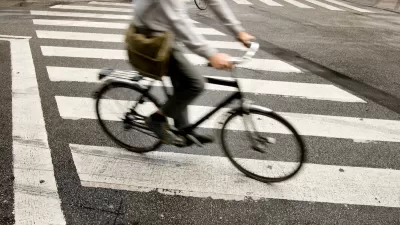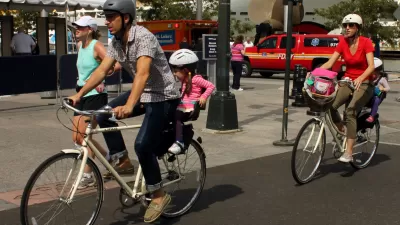New York City's broad study of years of traffic and crash data have given new insight to the city's transportation safety problems. Cyclists and the elderly are especially vulnerable, according to the report.
The New York Times reviews the report to bring a few more nuggets of stats on safety in the city. Other cities are calling for similar studies to help assess safety issues.
"* Residents of New York who are 65 or older make up 12 percent of the city's population, but they accounted for 38 percent of the pedestrian deaths that were studied.
* Elderly Asian-American residents of the city had a fatality rate twice the average of all residents over the age of 65, according to the report. That group, the study said, 'tend to be clustered in high-density, high traffic neighborhoods (Chinatown, Flushing, Jackson Heights) with generally acknowledged pedestrian safety challenges.'"
FULL STORY: More Accident Data: Cyclists and the Elderly, Beware

Trump Administration Could Effectively End Housing Voucher Program
Federal officials are eyeing major cuts to the Section 8 program that helps millions of low-income households pay rent.

Planetizen Federal Action Tracker
A weekly monitor of how Trump’s orders and actions are impacting planners and planning in America.

Ken Jennings Launches Transit Web Series
The Jeopardy champ wants you to ride public transit.

Washington Legislature Passes Rent Increase Cap
A bill that caps rent increases at 7 percent plus inflation is headed to the governor’s desk.

From Planning to Action: How LA County Is Rethinking Climate Resilience
Chief Sustainability Officer Rita Kampalath outlines the County’s shift from planning to implementation in its climate resilience efforts, emphasizing cross-departmental coordination, updated recovery strategies, and the need for flexible funding.

New Mexico Aging Department Commits to Helping Seniors Age ‘In Place’ and ‘Autonomously’ in New Draft Plan
As New Mexico’s population of seniors continues to grow, the state’s aging department is proposing expanded initiatives to help seniors maintain their autonomy while also supporting family caregivers.
Urban Design for Planners 1: Software Tools
This six-course series explores essential urban design concepts using open source software and equips planners with the tools they need to participate fully in the urban design process.
Planning for Universal Design
Learn the tools for implementing Universal Design in planning regulations.
Heyer Gruel & Associates PA
Ada County Highway District
Institute for Housing and Urban Development Studies (IHS)
City of Grandview
Harvard GSD Executive Education
Toledo-Lucas County Plan Commissions
Salt Lake City
NYU Wagner Graduate School of Public Service




























